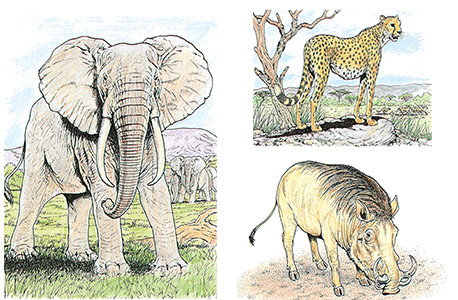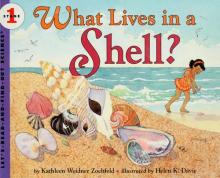Animal Life
The Insect World of J. Henri Fabre
Jean-Henri Fabre (1823-1915) was a French naturalist who penned many writings about his beloved insects. These essay/stories describe, in great detail, his encounters with some interesting insects – how he worked with them and what he discovered about them. For instance The material is informative and even humorous at times, but rather dense (definitely not dry!). Here is a sample, from "The Pine Processionary"...
You voracious little creatures, if I let you have your way, I should soon be robbed of the murmur of my once so leafy pines! Today I will seek compensation for all the trouble I have taken. Let us make a compact. You have a story to tell. Tell it me; and for a year, for two years or longer, until I know more or less all about it, I shall leave you undisturbed, even at the cost of lamentable suffering to the pines.
Although it might be suitable for high school students and could possibly be read aloud to younger students, it constitutes a portion of the Freshman Lab studies at Thomas Aquinas College. J. Henri Fabre is listed as one of the authors recommended in Catholic Authors: 4-Sight Edition.
A compilation of some of these stories, titled Fabre's Book of Insects is available from Emmanuel Books.
Copyrights 1949/1977
What Bluebirds do
We picked a full bag of mostly new picture books from the library as we don't visit it as often as during the school year. Several new publications were examined by my review team – our children. Some were bold, creative, large and colorful. Fiction, informational, biographies: we read many different books over a number of days. In my mind as I hear their comments and listen or watch their reading enjoyment I run my own elimination process.
A simple, quiet, gentle book was the clear winner this time, beating all of its "louder" competitors: What Bluebirds Do, by Pamela Kirby. It won all of our hearts with the true photographic story of a pair of bluebirds in the backyard of the author's house. Beautiful photography, a list of resources, and a careful description of the bluebirds' life are combined into the most delightful nature-book we have come across in a while!
Wild Animals Coloring Book
A very nice, detailed and academic-oriented coloring book for learning about wild animals. In addition to beautiful line drawings of 47 different animals from around the world, the text provides common and scientific names and details about appearance, location, habits, size, etc. The index includes both common and scientific names as well, for easy look-up. Illustrations are royalty free (within certain conditions) and may be copied for use within your family.
Dover offers a couple of examples of how the finished images might look:

Elephant Families
This book focuses on elephant's care for and interaction with each other with a significant emphasis on elephants being killed by poachers.
Unlike the interesting scientific information designed to impart facts and help children develop an interest in science (as I've come to expect from the Let's Read-and-Find-Out Science Series) this book gets lost in the mediocrity of environmentalism by giving children a sort of emotional attachment to elephants (by over-emphasizing their slight similarities with people) and shocking them with details about how and why people kill elephants and a somewhat gruesome (relative to the age-level) picture of a truck filled with blood-stained elephant tusks. Rather disappointing altogether.
Animals in Winter
A beautifully illustrated look at where various animals go when it snows and how they prepare for winter. We learn details of the migration of various animals (such as birds, butterflies and bats), animals that hibernate, animals that store up food for the winter and animals that have to find their food throughout the winter. Includes instructions for feeding birds and other wild animals in your own backyard.
What Lives in a Shell?
This beautifully illustrated book, designed for preschool and kindergarten, explains different kinds of shells and the creatures that inhabit them. The shells are compared to the shelter occupied by people and by other animals. We learn that some shells do grow larger along with certain animals while other animals must shed their out-grown shell in favor of a new one. Many shells are beautifully depicted and identified and the story-format of the text is very easy and interesting for young children to follow.
Falcons Nest on Skyscrapers
This is a very interesting book (with excellent illustrations) that introduces young children to various falcons living in the United States, some of their remarkable abilities and the story of how some scientists were successful in re-introducing the peregrine falcon in the Eastern United States after they nearly became extinct because of an insect spray called DDT which was overused earlier in the twentieth century. The story focuses on Scarlett, a peregrine falcon who was born in captivity, released, and discovered building a nest thirty-three stories up on the ledge of a skyscraper in Baltimore. This location made observation ideal and we learn that she managed to find a wild falcon for a mate and that their offspring have helped significantly in restoring the falcon population.
How do Birds Find Their Way?
A nicely illustrated and interesting look at the amazing phenomenon of bird migration, what we know about how migration works and some various theories about details that are still being studied. Includes a chart of how high various birds fly.
Who Eats What? Food Chains and Food Webs
This book explores the notion of various plants and animals that are linked together based on "who eats what." Children will learn about some simple food chains such as – leaf, caterpillar, wren and hawk. They also see how one plant or animal can belong to several food chains and that members or these related food chains (food webs) have a certain amount of dependence on each other. The text goes on to explain, through an example of a problem with over-hunted otters around the turn of the century, that when part of a food chain is disturbed, the other members will also be affected. There are some mild "environmental" messages in this text which our family used as an opportunity to discuss good stewardship of what God has given us.










